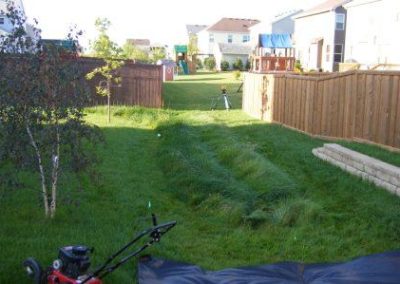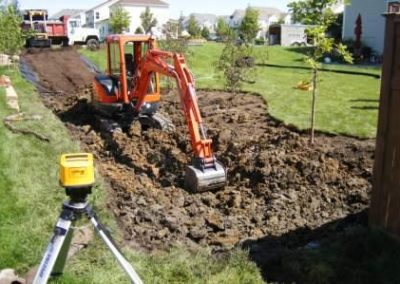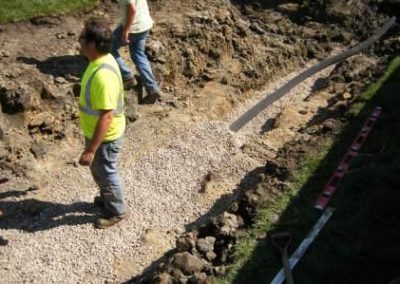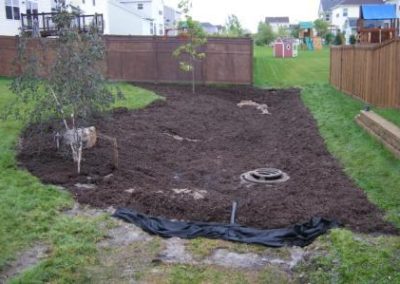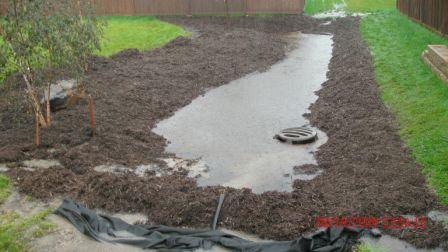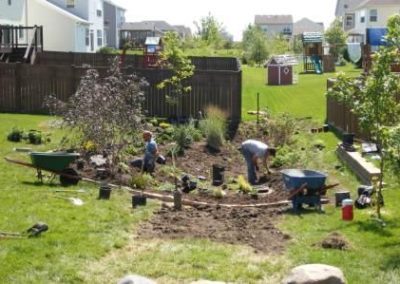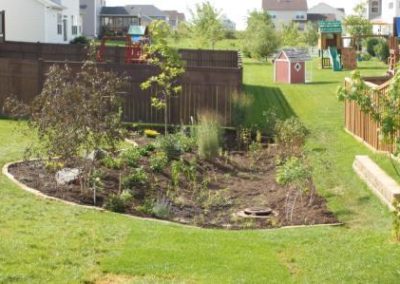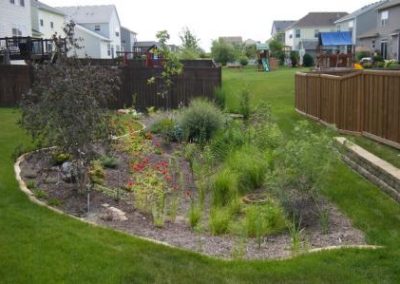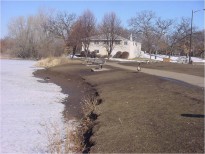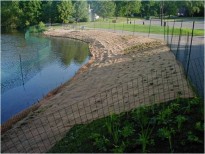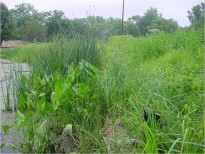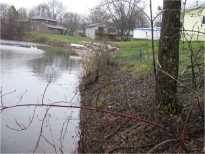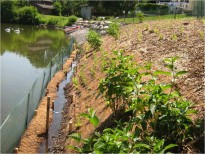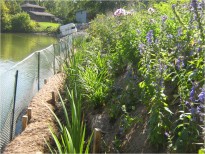Program
Urban Conservation Practices
Environmentally Friendly Landscaping
Urban storm water runoff continues to be a big issue in Carver County. Not only does it increase the volume of water heading to our lakes and streams, it also collects and carries pollutants to these water bodies that can cause an impairment of the water quality. There are several urban conservation practices that can be installed to increase storm water infiltration and reduce the potential for pollutants to be carried downstream. Two of those practices are rain gardens and shoreline restorations.
Rain Gardens
A rain garden is simply a shallow depression designed to collect storm water and allow it to soak into the ground instead of running off the landscape. Rain gardens can be designed to catch large volumes of parking lot and street runoff or simply the runoff from residential rooftops, driveways and lawns. These gardens can be planted in a variety of styles, from flowering native plants that attract a variety of insects and wildlife, to low maintenance shrub designs. The installation of rain gardens has become a very effective way to remove pollutants from storm water and decrease the volume of storm water runoff. Their aesthetic value as a landscaping feature also provides benefit to the community itself.
To learn about a rain garden installed at Family of Christ Lutheran Church near Bluff Creek, you wan watch the Rain Garden Video here.
Below is an actual rain garden that was recently installed in Chaska, from start to finish:
Shoreline Restorations
Many lakes throughout the metro area have had their native shoreline plants removed and replaced with manicured blue grass lawns. A shoreline restoration involves restoring these areas by stabilizing the eroding bank and re-vegetating with native vegetation.
The problem with a perfectly manicured shoreline, is the lack of a binding fibrous root system, which previously held the soil and shoreline structure in place. Over time, wave action and encroaching ice erode shorelines and cause them to recede inland. By restoring the shoreline, we can bring back that dense combination of deep root systems and secure the soil, ultimately reducing shoreline erosion.
Another benefit of a native shoreline is the decreased presence of geese. The taller native plants deter geese by limiting their vision, ultimately keeping them from landing there in fear of predation.
Carver County has developed a cost share program that will provide financial assistance to homeowners that are interested in installing a rain garden or a shoreline restoration. There will also be numerous public meetings and workshops that will cover the functionality, design, installation, and maintenance for both of these practices. For more information, please contact the Carver SWCD at 952-466-5230.
Contact & Info
- Seth Ristow, Resource Conservation Technician
- sristow@carvercountymn.gov
- (952) 466-5230
